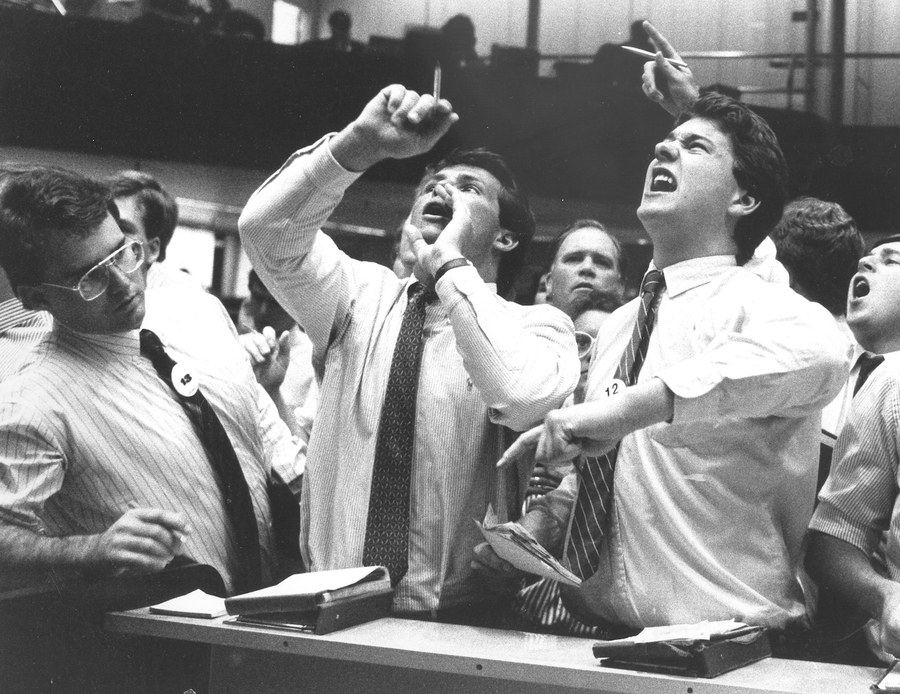It’s About to Get Even Harder to Make Money on Wall Street

Tags: USA
It’s About to Get Even Harder to Make Money on Wall Street published by Evanvinh
Writer Rating: 5.0000
Posted on 2016-03-26
Writer Description: Evanvinh
This writer has written 733 articles.
Regulators are planning to crack down on bankers’ bonuses, too.
BY: EMILY JANE FOX
ter an already rough year for banks and hedge funds, it is about to get even harder to make a big buck on Wall Street.
Regulators plan to require investment banks to hold back a greater share of employee bonuses as part of an update to the compensation rules put in place in the wake of the financial crisis in 2007, The Wall Street Journal reports. By holding back a portion of bonus salary for a set number of years, banks would have time to pull back the money if an executive or employee makes risky trades that harm the company and lose money for investors. In theory, this will disincentivize some of the behaviors that landed banks in trouble nearly a decade ago. While the regulators have not come up with a final proposal, theJournal reported that the original draft created five years ago would have banks withholding as much as 50 percent of bonuses, for longer than the three-year period that is already in place. The new rules for compensation may not be limited to executives, either: regulators are reportedly mulling factors like how much money a banker handles, in addition to seniority.
The additional Wall Street reforms have gotten a big push from Washington as Barack Obama aims to complete the effort he began with Dodd-Frank in 2010. Earlier this month, the president met with regulators at the White House, pressuring them to finalize the new set of rules. “Risky bets with inadequate safeguards and that reward executives who take those risks greatly can cause enormous damage to our economy overall,” he said. “We went at financial regulation very hard to guard against another era of ‘too big to fail’ and some of the systemic disruptions that occurred because of lax regulation.”
Democratic front-runner Hillary Clinton has also derided the “short-termism” that she said rules Wall Street, calling for regulations that would not only pull back bonuses, but also let shareholders vote on executive pay packages.
The Securities and Exchange Commission took a stand on runaway pay packages last year, requiring companies to disclose the pay ratio between their top executive and their average worker.
The new set of rules will be yet another strike against big banks, which are already struggling to compete with private-equity firms, hedge funds, and Silicon Valley for top talent. Since the new regulations will apply to firms with $50 billion or more in assets, smaller firms have more freedom when it comes to establishing their own compensation rules, and may therefore keep a leg up in the talent wars. Bonuses were already lower in 2016 at many of the big banks, as market volatility weighed on executive compensation. This would set up hedge funds as an even more desirable place for financial professionals to make real money. Yet, 2016 has been rough on that lot, too. Even Silicon Valley, once thought of as an endless pot of gold waiting on the other coast, is pulling back.
It is a tough question to ask but one worth asking: Can’t anyone get rich in peace anymore?
Like the Tea Party did at its inception, Occupy Wall Street fashioned itself as an heir to the American Revolution and the Founding Fathers. Correspondingly, its participants modeled their manifesto after the Declaration of Independence. But unlike the far-flung Tea Party, Occupy Wall Street had geography on its side—Zuccotti Park is situated in Lower Manhattan, where the Sons of Liberty plotted to shrug off British rule, and where George Washington later delivered his farewell address to the Continental Army.

The Revolution Will Be Graphic-Designed
The protesters disseminated their own Declaration of Independence, replete with a list of grievances calling out the capitalist system for the way it degrades those not born into power or money. Its condemnations targeted a broad spectrum of elite society, from oil executives polluting the Gulf to pharma companies blocking lifesaving generics (and, of course, the politicians who decry these policies in public and pocket profits from the perpetrators in private). Lacking suggested alternatives or solutions, the declaration served as a rallying cry rather than a prescription for redress. This would become one of the central criticisms levied against the movement.

1/12
The Revolution Will Be Graphic-Designed
Everything at Zuccotti Park was free—books, clothing, food—and donations were accepted to support the needs of the protesters. Benefactors supplied them with everything from MetroCards to help them get to the park, to newspapers letting them know where the next rally would be. But as much as they relied on the fiscal kindness of strangers, physical currency was an object of scorn for many of the activists. Ron Paul fans would be pleased with this phony bill’s assertion that the dollar is “worthless paper” and that “the Federal Reserve note is unconstitutional tender backed by nothing.”

1/12
The Revolution Will Be Graphic-Designed
Despite the dubious claim that the Federal Reserve Bank is a private entity (the Fed may be operationally independent from the government, but it is still subject to congressional oversight), this pamphlet on the “people’s history” of the Federal Reserve strikes at the heart of a central concern Occupy sought to highlight—the so-called unholy alliance between the wizards of Wall Street and a government that regulates the relationships between them and everybody else.

1/12
The Revolution Will Be Graphic-Designed
Out of this ire—we the many are preyed upon by the very few—grew the slogan that would define the movement: “We are the 99 percent.” The slogan was noted as a brilliant propagandist trope, even by the movement’s detractors. It combined populism with the creation of a common foe, whom, statistically speaking, it was easy enough not to relate to.

1/12
The Revolution Will Be Graphic-Designed
Occupy Wall Street was inspired by protesters in Spain, where “Los Indignados” decried government policies that had resulted in, among other indignities, unemployment as high as 45 percent for recent university graduates. O.W.S. returned the favor by marketing extensively to the Spanish-speaking community, which was instrumental in giving the protest momentum not only in New York but also across the country, in California. By keeping the slogan consistent and changing only its language, posters reading, “Somos el 99%,” highlighted the near universality of the movement and its concerns.

1/12
The Revolution Will Be Graphic-Designed
Here, the diversity of the 99 percent is represented in a hodgepodge of imagery. This 99 percent includes men with canes, and life preservers, women in high heels, a couple dancing, two toddlers, and, third from the bottom left in the second nine, what appears to be a pickpocket. Thievery (which became a very real problem at Zuccotti Park) aside, these archetypes embodied the pacifist revolutions that spanned the globe in 2011. The protesters’ efforts at peace—while not always successful—would become an important contrast with the police and the state.

1/12
The Revolution Will Be Graphic-Designed
Borrowing the iconography of a Soviet iron fist, this menacing blue claw in the sky makes no mistake of who will be swept away in the coming tempest—the tiny red suit, standing stiffly below.

1/12
The Revolution Will Be Graphic-Designed
Pure, pretty, and powerful, this “Rise Up” poster invokes the spirit of the 1960s, depicting the Every Student who has found her voice. Her fist is raised; how could she not help change the world? Students became an integral part of the Occupy movement, both for their hope that they could craft a better future and their protestations against crippling loans and a dismal job market they had done nothing to create.

1/12
The Revolution Will Be Graphic-Designed
The Occupied Wall Street Journal was printed every morning and handed out for free at Zuccotti Park, in both English and Spanish. The paper lampooned the culture of their adopted neighborhood, from its title to the dollar signs lining the bottom.

1/12
The Revolution Will Be Graphic-Designed
At times, the protesters’ devil-may-care attitude infuriated not only those who worked in banks around Zuccotti Park (to say nothing of the card-carrying members of the 99 percent who worked in the Starbucks, Chipotles, and food carts nearby) but also those whose apartments surrounded the encampment. Complaints of incessant drumming, mass accumulation of debris, and defecation in the middle of the street led to the drafting of a Good Neighbor Policy, distributed around the neighborhood to pacify the residents and make a declaration to public about the respectability of the 99 percent.

1/12
The Revolution Will Be Graphic-Designed
Mayor Michael Bloomberg—an indisputable member of the 1 percent—was castigated far and wide in Zuccotti Park for his perceived antipathy toward the protesters and their right to assemble. The tenor of the Occupy movement made a decisive shift from protesting economic injustice to defending the right of occupation when it became clear that the mayor would attempt to evict the protesters. But perhaps the greatest impact of the Occupy movement is reflected in the quotation this poster ascribes to Bloomberg: “an unfortunate minority . . . has created an intolerable situation.” The mayor was defending the eviction with the claim that the few are harming the many—exactly the sentiment Occupy Wall Street set out to declare.
PreviousNext
Sources: http://www.vanityfair.com/news/2016/03/wall-street-bonuses-regulators#4
You have the right to stay anonymous in your comments, share at your own discretion.


